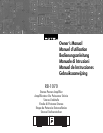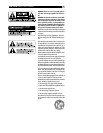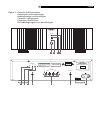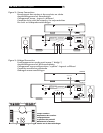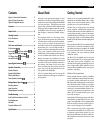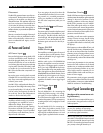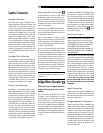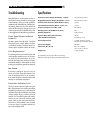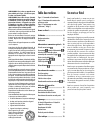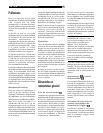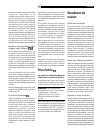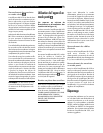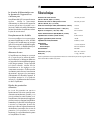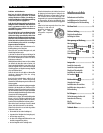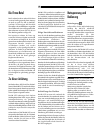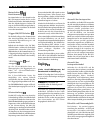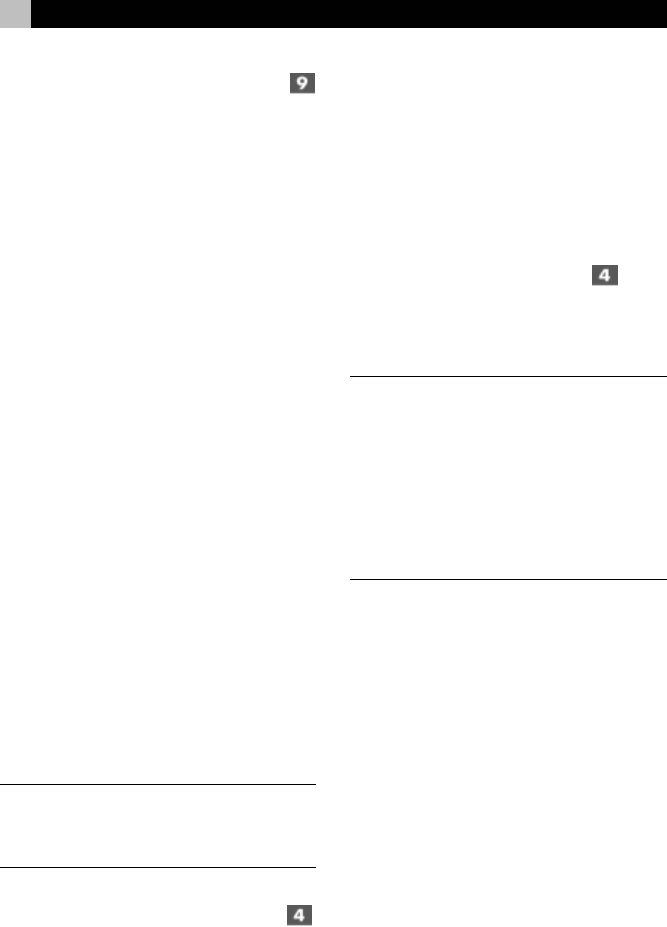
7 English
Speaker Connection
Speaker Selection
We recommend using loudspeakers with a
nominal impedance of 4 ohms or higher with
the RB-1070. You should exercise some cau-
tion in driving multiple pairs of speakers in
parallel configuration, because the effective
impedance the amplifier sees is cut in half.
For example, when driving two pair of 8 ohm
speakers, the amplifier sees a 4 ohm load.
When driving multiple speakers in parallel,
it is recommended that you select speakers
with a nominal impedance of 8 ohms or higher.
Speaker impedance ratings are less than
precise. In practice, very few loudspeakers will
present any problems for the RB-1070. See
your authorized Rotel dealer if you have any
questions.
Speaker Wire Selection
Use insulated two-conductor stranded wire to
connect the RB-1070 to the speakers. The size
and quality of the wire can have an audible
effect on the performance of the system. Stan-
dard speaker wire will work, but can result
in lower output or diminished bass response,
particularly over longer distances. In general,
heavier wire will improve the sound. For best
performance, you may want to consider spe-
cial high-quality speaker cables. Your autho-
rized Rotel dealer can help in the selection
of appropriate cables for your system.
Polarity and Phasing
The polarity — the positive/negative orien-
tation of the connections — for every speaker
and amplifier connection must be consistent
so all the speakers will be in phase. If the po-
larity of one connection is mistakenly reversed,
bass output will be very weak and stereo im-
aging degraded. All wire is marked so you
can identify the two conductors. There may
be ribs or a stripe on the insulation of one
conductor. The wire may have clear insula-
tion with different color conductors (copper
and silver). There may be polarity indications
printed on the insulation. Identify the positive
and negative conductors and be consistent with
every speaker and amplifier connection.
Stereo Speaker Connection
The RB-1070 has two pairs of color coded
binding posts on the back panel. These con-
nectors accept bare wire, connector lugs, or
dual banana type connectors (except in the
European Community countries where their
use is not permitted).
Route the wire from the RB-1070 to the speak-
ers. Give yourself enough slack so you can
move the components enough to allow access
to the speaker connectors.
If you are using dual banana plugs, connect
them to the wires and then plug into the backs
of the binding posts. The hexagonal thumb-
screws of the binding posts should be screwed
in all the way (clockwise).
If you are using terminal lugs, connect them
to the wires. If you are attaching bare wires
directly to the binding posts, separate the wire
conductors and strip back the insulation from
the end of each conductor. Be careful not to
cut into the wire strands. Unscrew (turn coun-
terclockwise) the binding post hexagonal
thumbscrews. Place the connector lug or wire
around the binding post shaft. Turn the hex-
agonal thumbscrews clockwise to clamp the
connector lug or wire firmly in place.
Note: Be sure there are no loose wire
strands that could touch adjacent wires or
connectors.
Bridged Mono Operation
[See Figure 3 for bridged operation
jumper setting and connection illus-
tration.]
The two channels of the RB-1070 can be
“bridged”. In this configuration the single
channel produces a massive 330 watts! This
feature allows you to increase the overall
power output of your system by bridging the
RB-1070 and adding a second bridged RB-
1070. Or the RB-1070 is bridged to drive a
monophonic subwoofer. Note however that
when the RB-1070 is bridged the speaker con-
nected to it must have an impedance of 8 ohms
or more.
In order to use the RB-1070 in bridged mode,
three “jumper” connectors inside the ampli-
fier must be moved from one set of pins to
another. This task should be done by a qualified
technician. See your authorized Rotel dealer.
In addition the RB-1070 is connected to the
other components in a different way. When
the RB-1070 is setup for bridged operation
the Bridged Mono indicator light
on the
front panel will light.
Resetting Jumpers
Before opening the RB-1070 cabinet to re-
set the jumpers, the power cord must be
unplugged from the wall. DO NOT OPEN
THE CABINET OF THE RB-1070 BEFORE
THE POWER CORD HAS BEEN UN-
PLUGGED FROM THE WALL. FAILURE TO
DO SO WILL EXPOSE YOU TO HAZARD-
OUS VOLTAGES.
After the power cord has been unplugged,
remove the screws that hold the cabinet cover
in place and slide the cover off the amplifier.
Locate the three jumper pin blocks labeled S
601, S 602 and S 603. The factory standard
(stereo) position of the jumpers is on pins 1
and 2 of each block. There is a * mark on
the circuit board next to this position. To convert
the RB-1070 to bridged mono move all three
jumpers so they are on pins 2 and 3 of each
jumper pin block. Replace the cover of the
cabinet. Do not plug the RB-1070
power cord back into the wall out-
let until the cabinet cover has been
replaced.
Input Connection
When using the RB-1070 in bridged mono
mode, connect the cable from the preampli-
fier output to the left input. No connection is
made to the right input.
Bridged Speaker Connection
When using the RB-1070 in bridged mono
mode, the wire to the speakers is connected
to the positive terminals of the left and right
channels. Connect the wire that goes to the
positive terminal of the speaker to the posi-
tive terminal of the left channel of the RB-1070.
Connect the wire that goes to the negative
terminal of the speaker to the positive termi-
nal of the right channel of the RB-1070. No
connections are made to the negative termi-
nals of the RB-1070.



